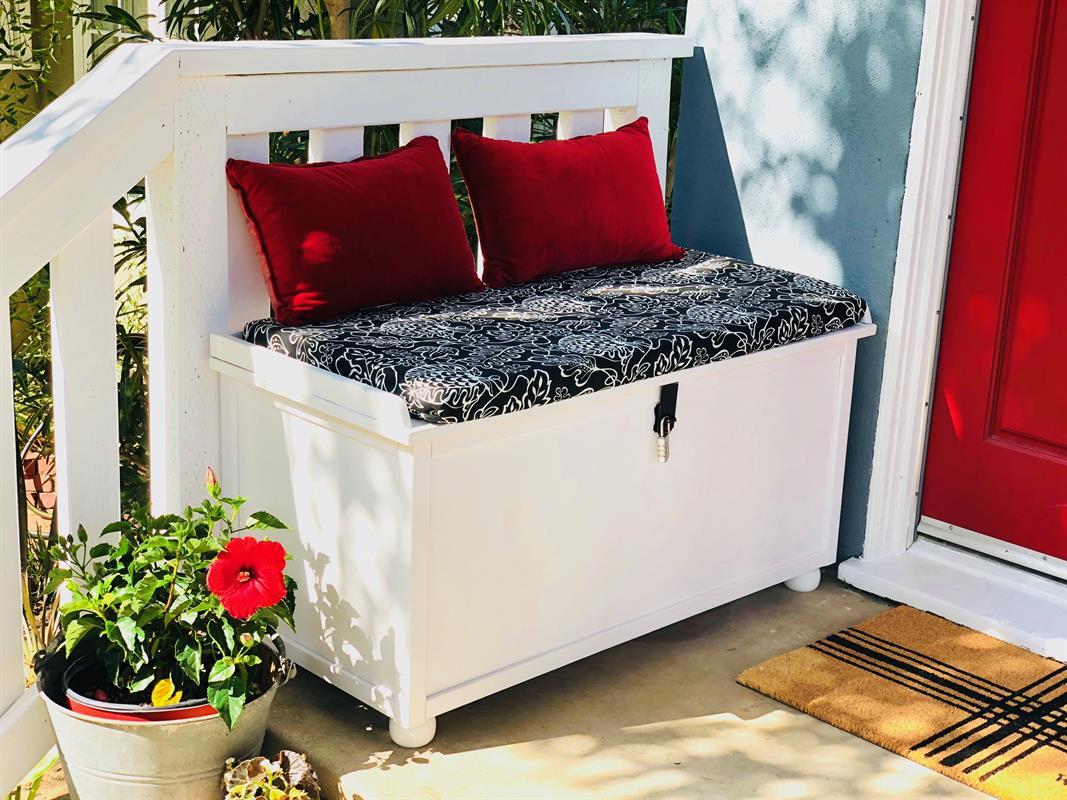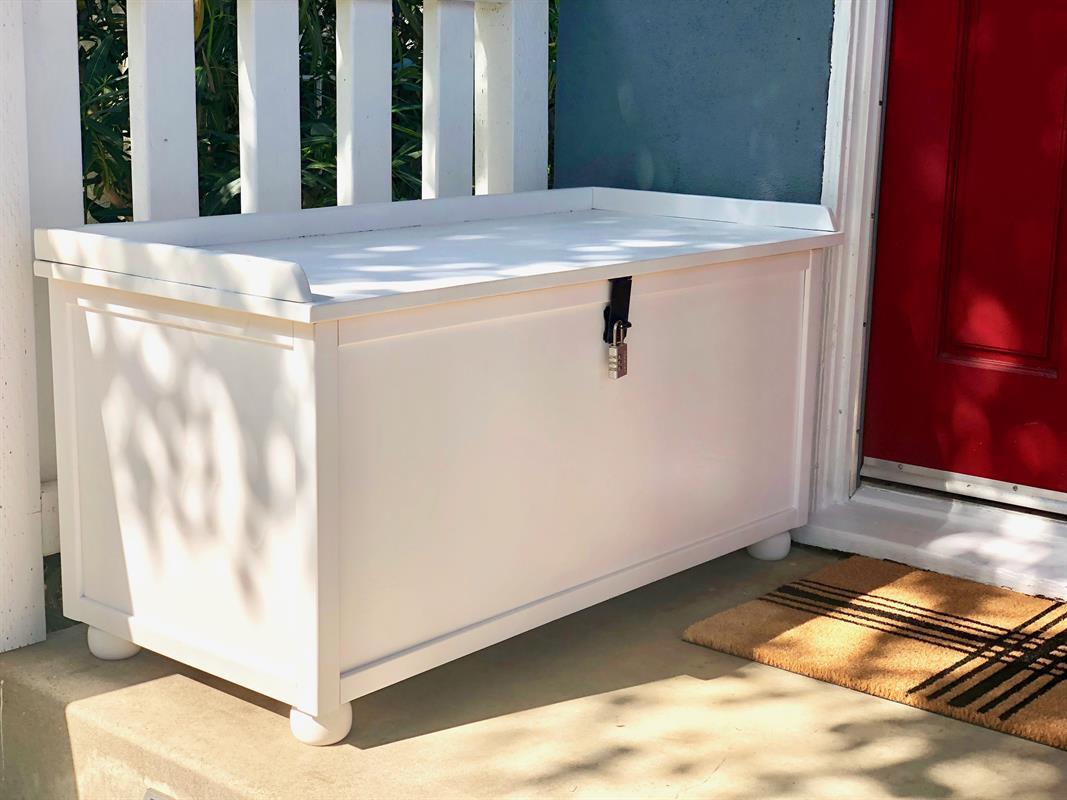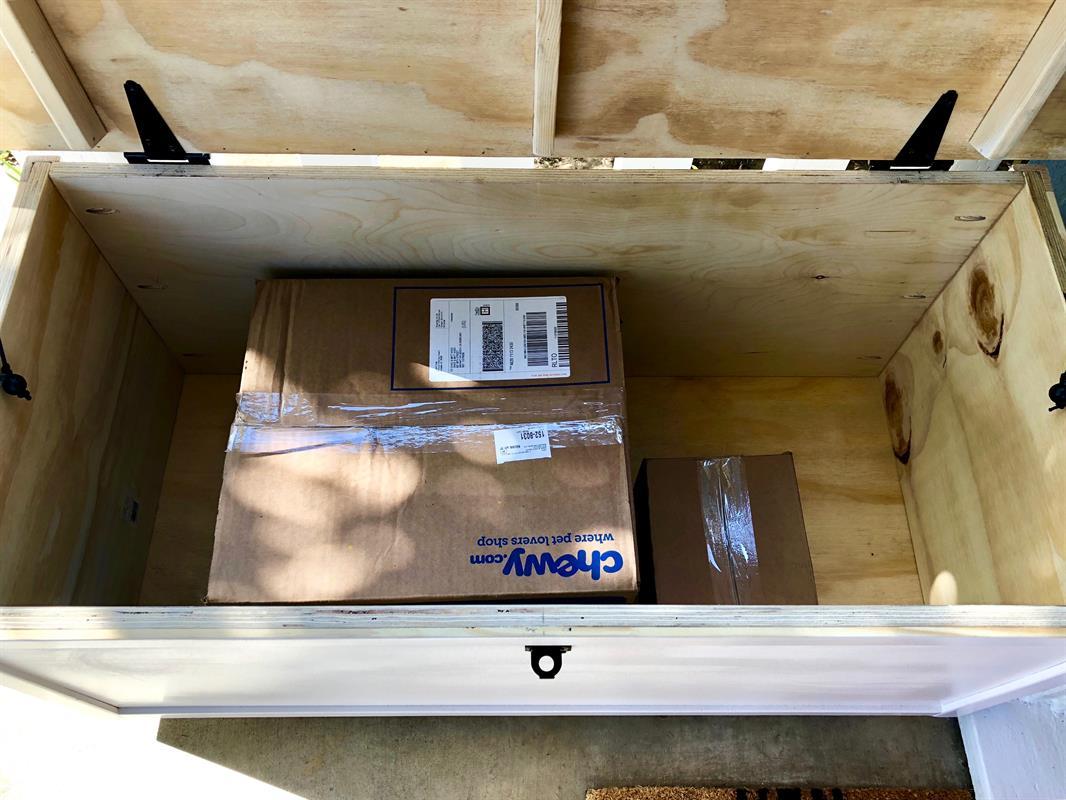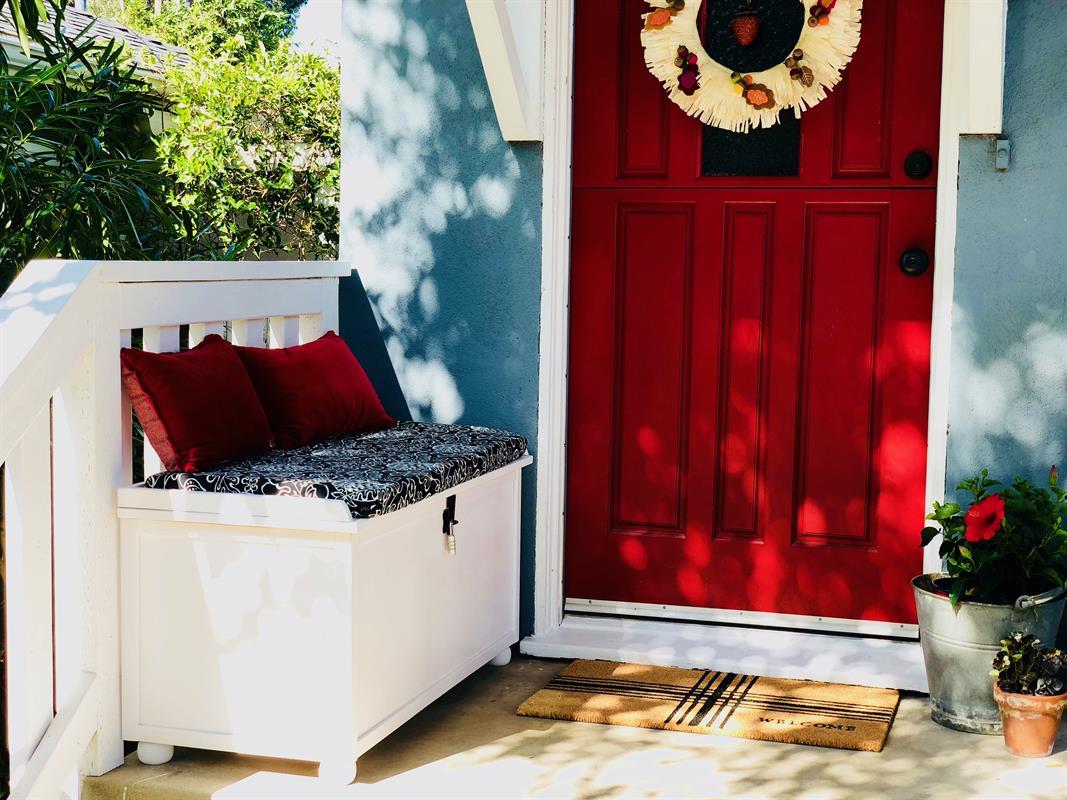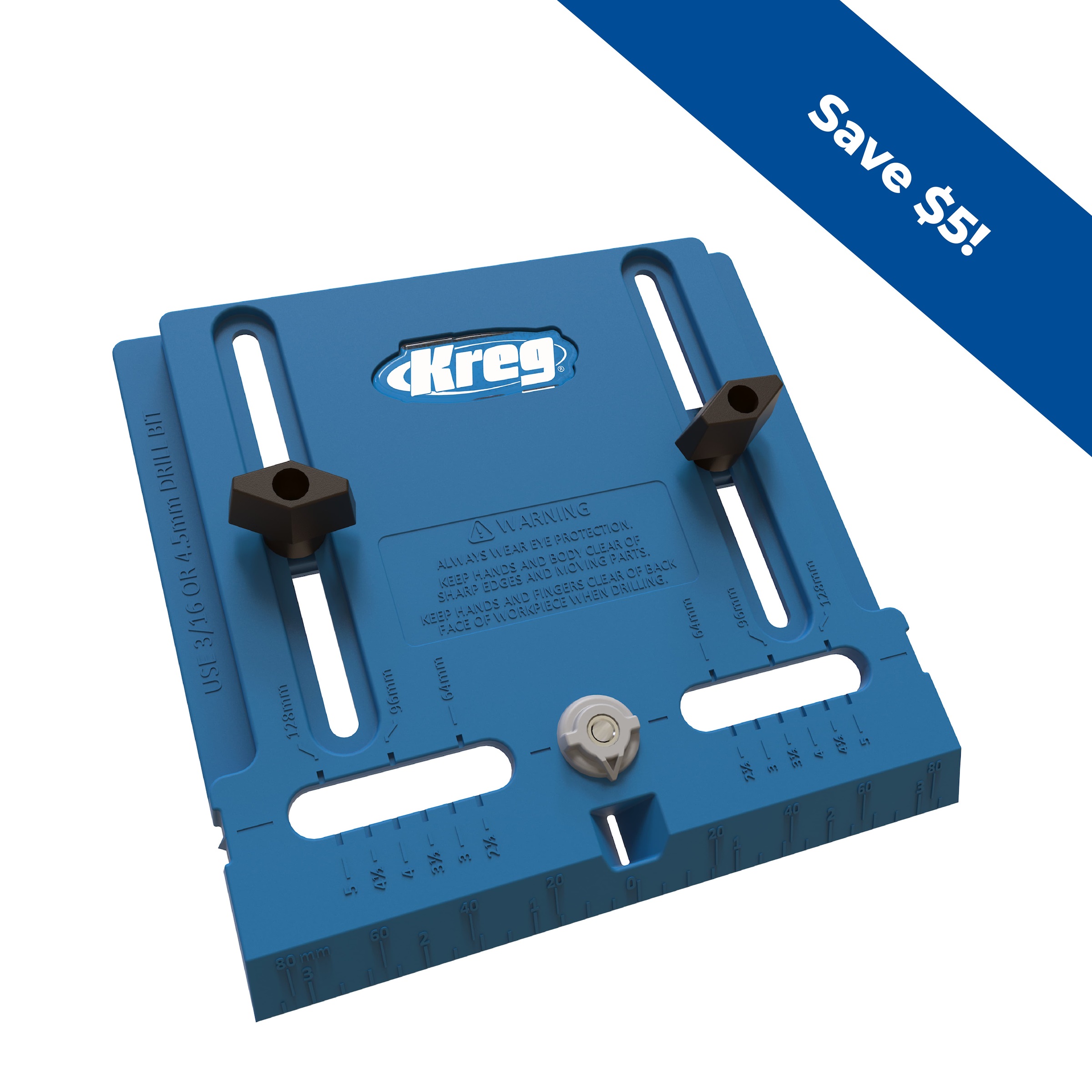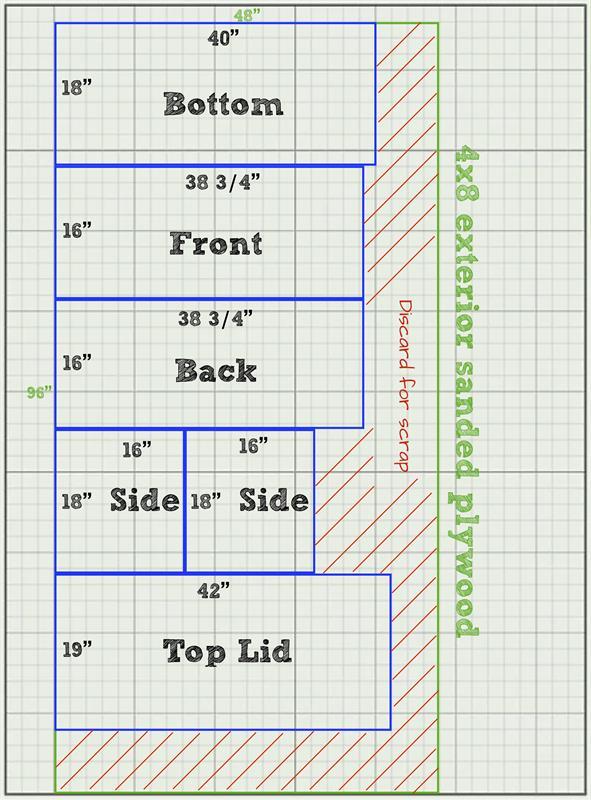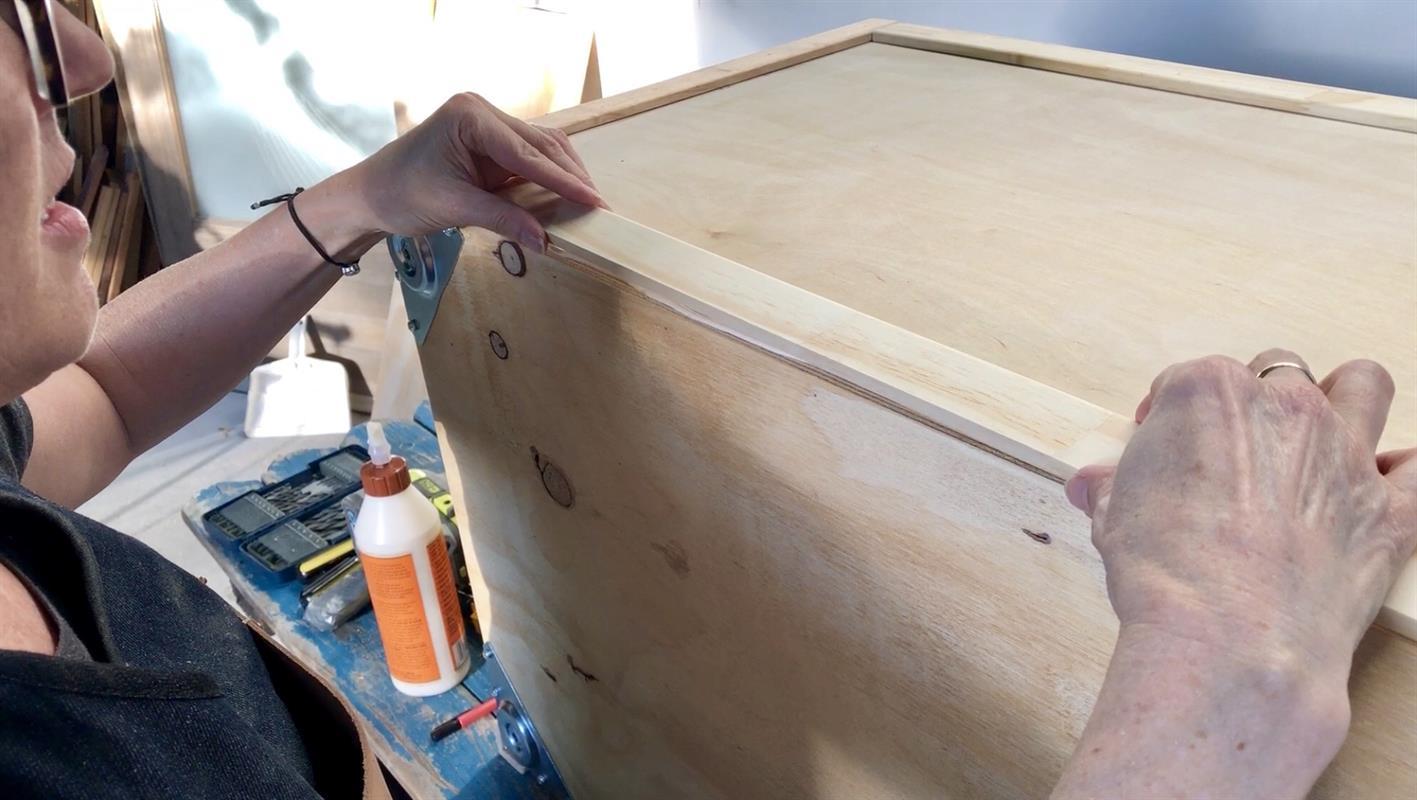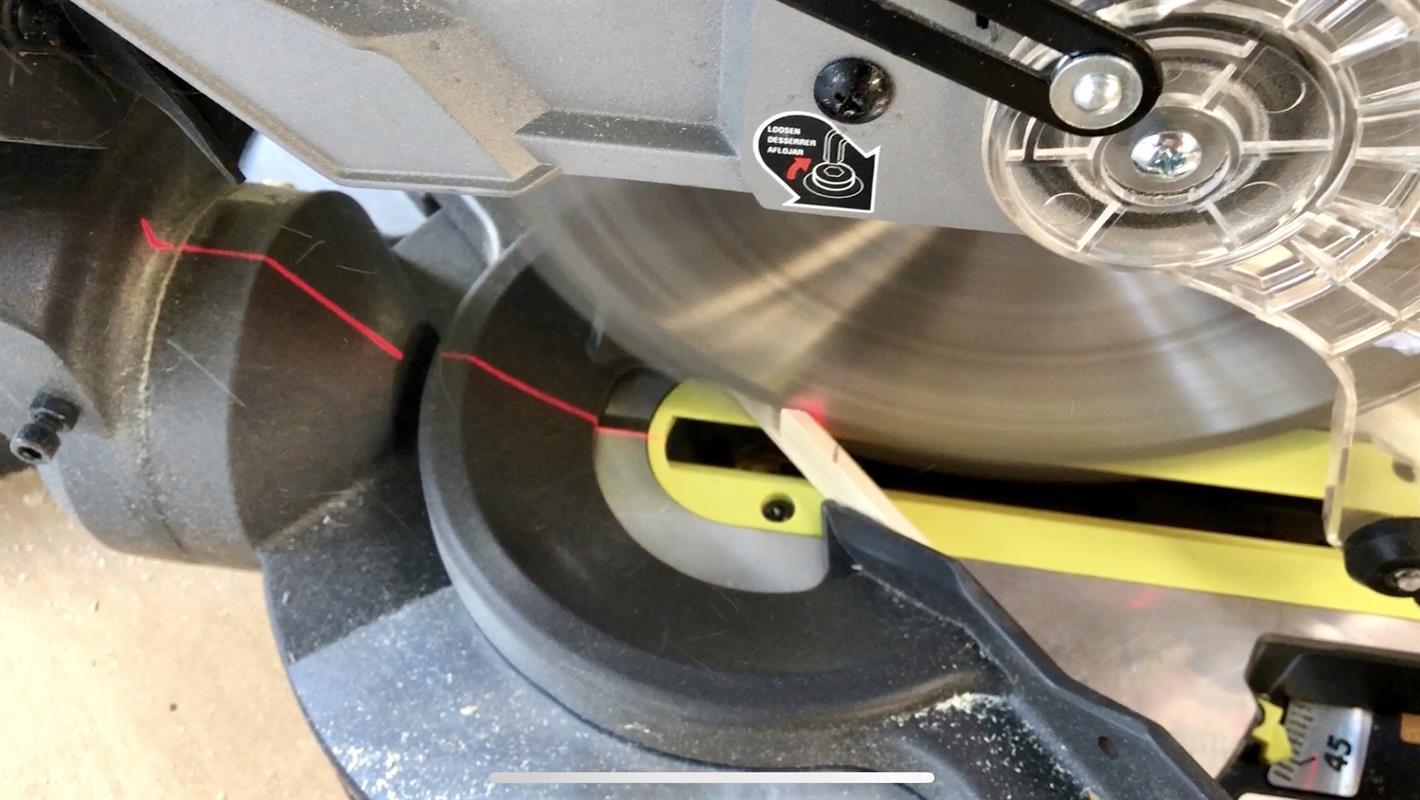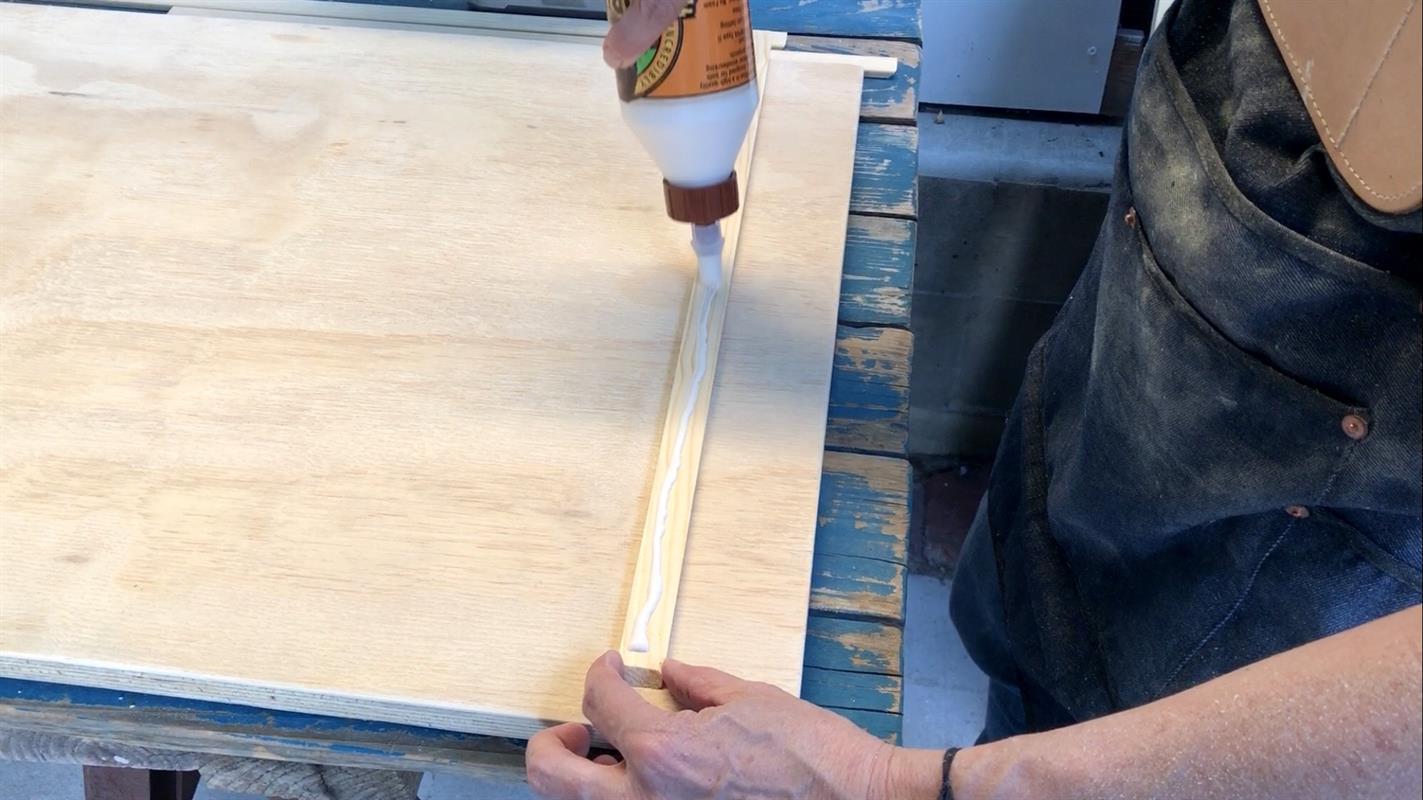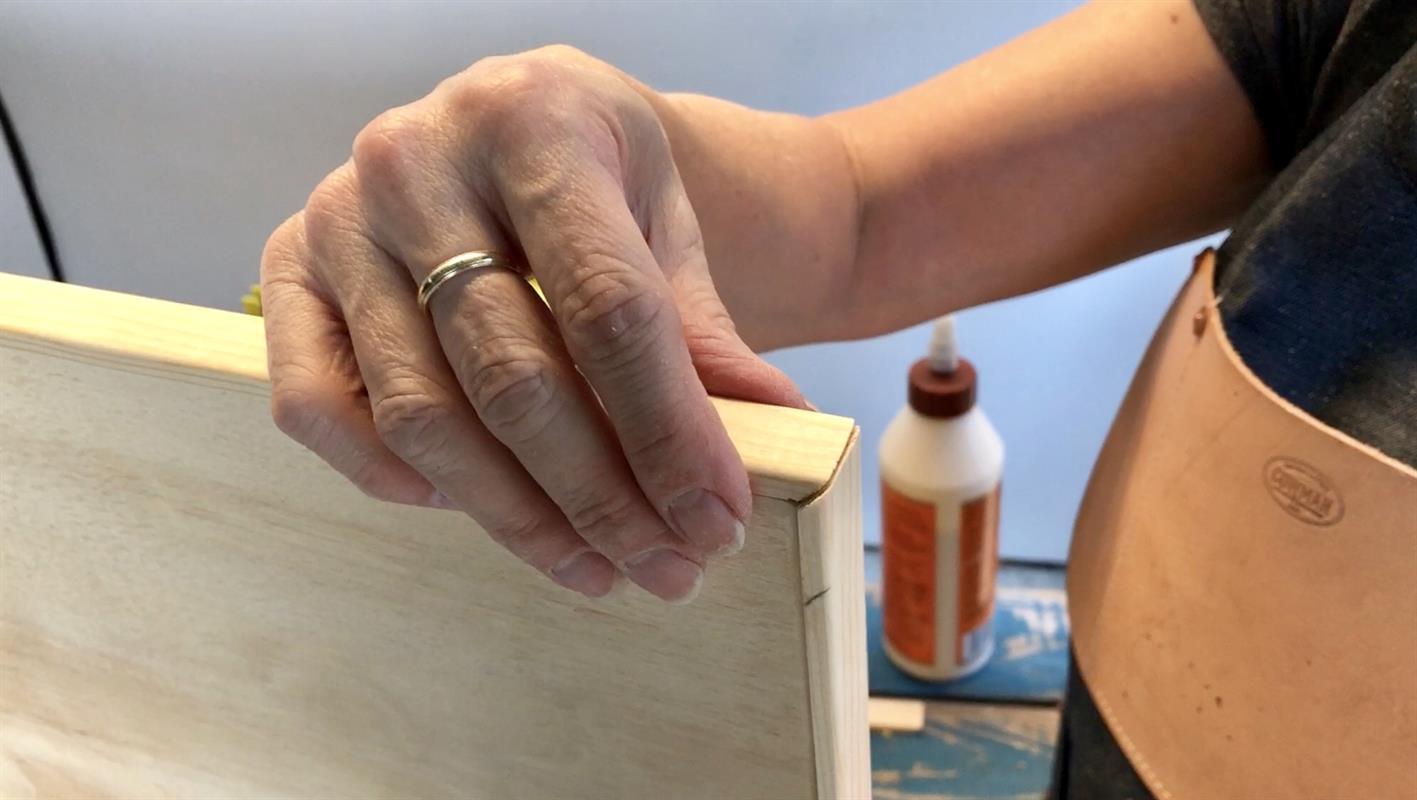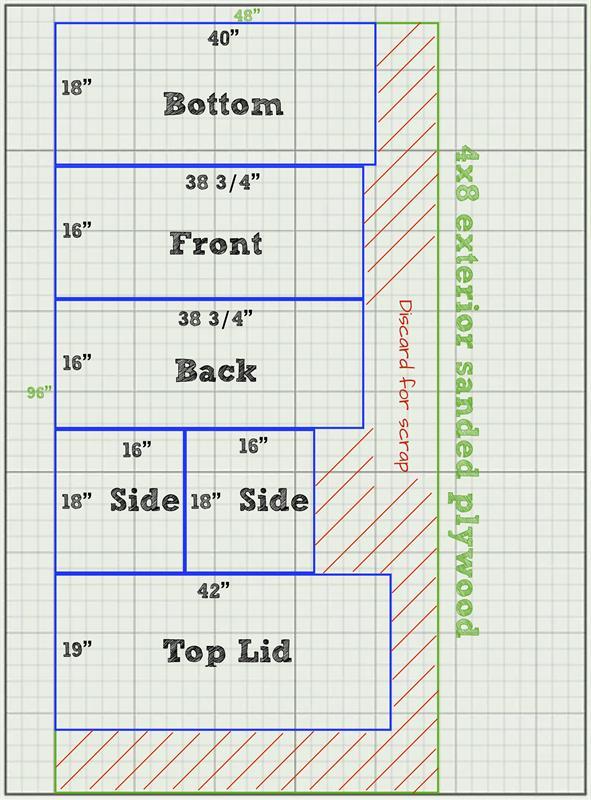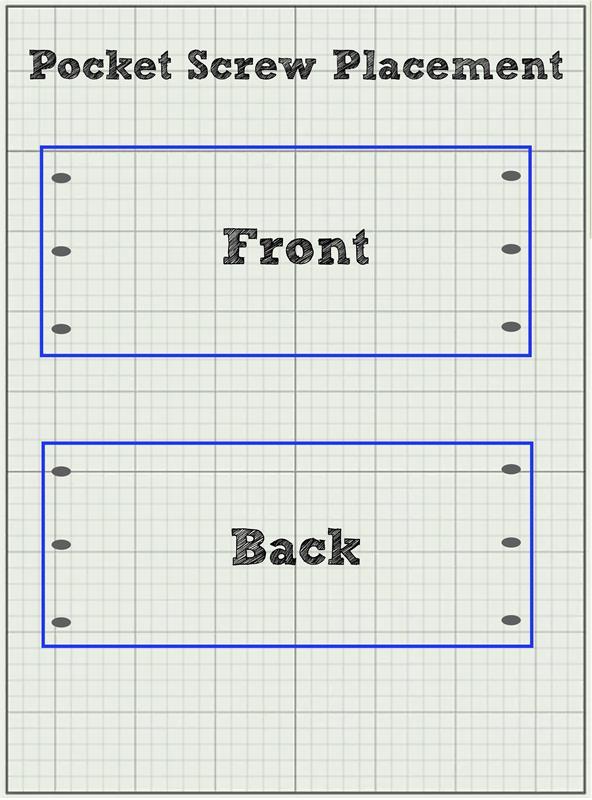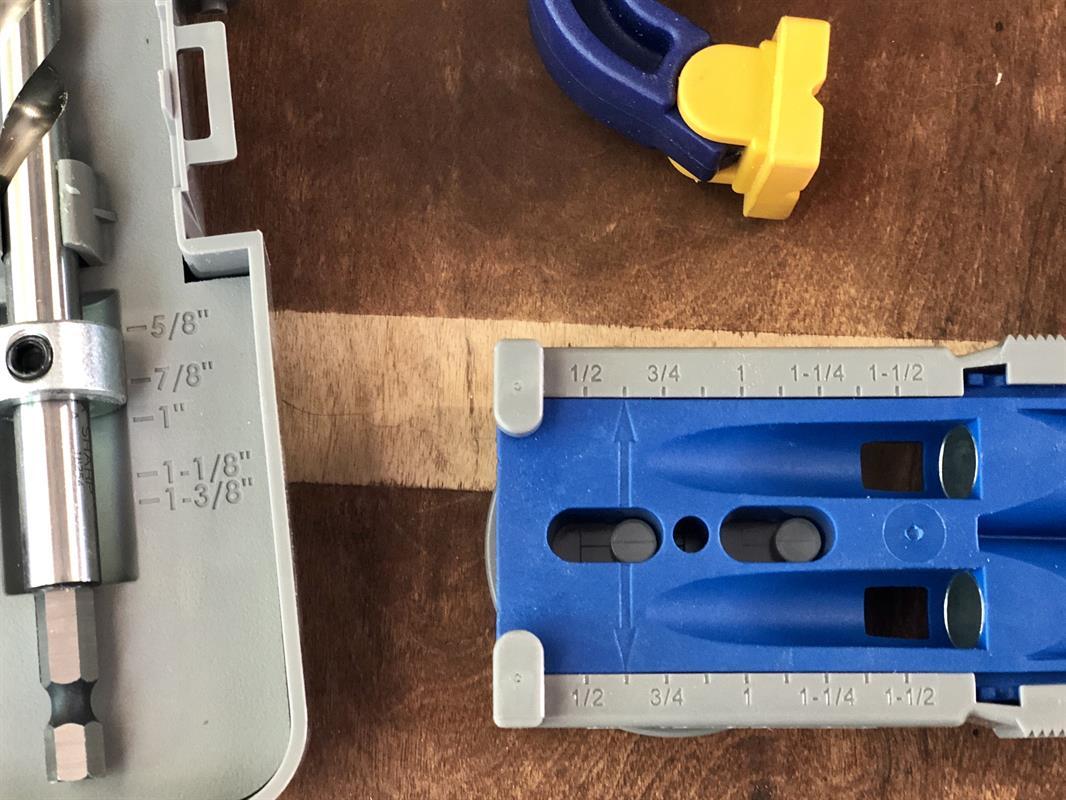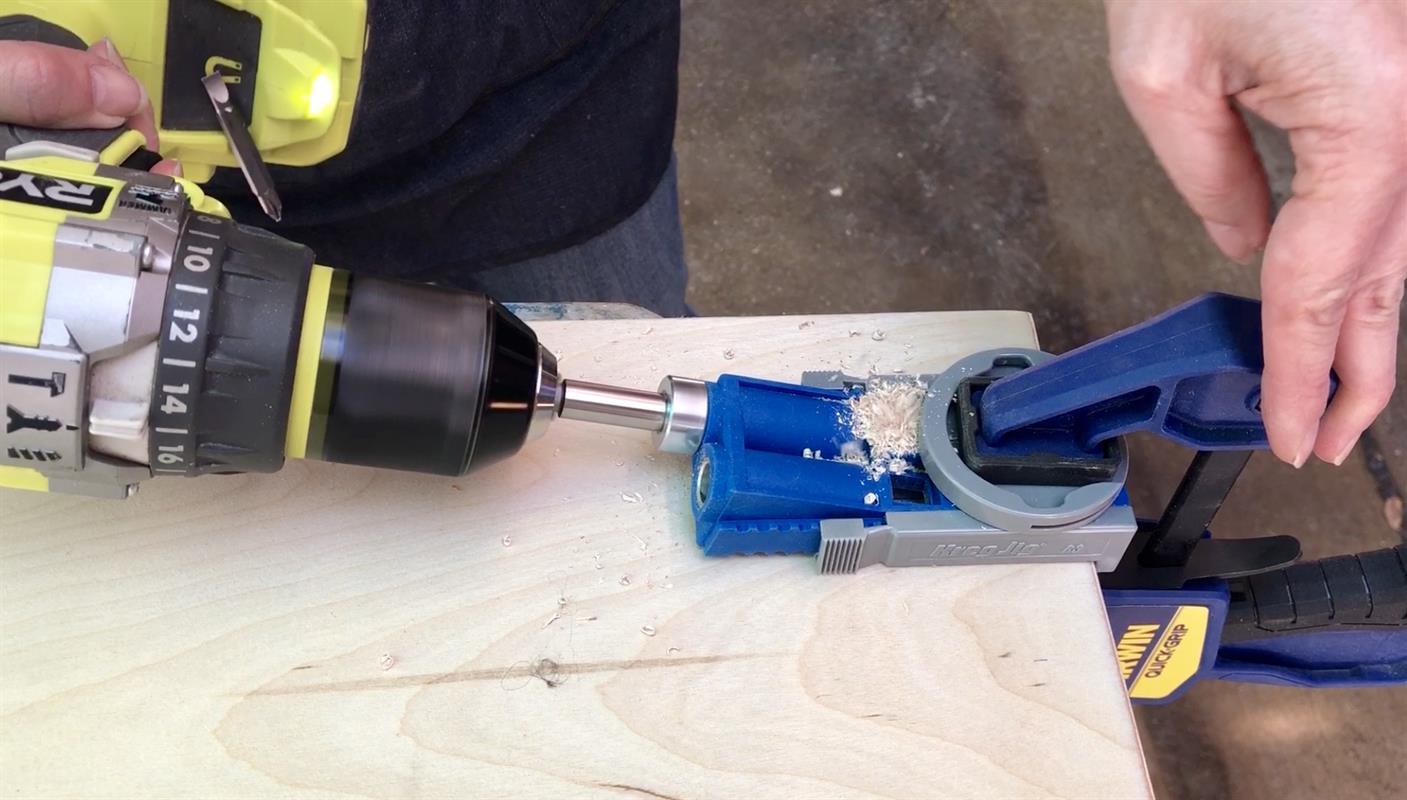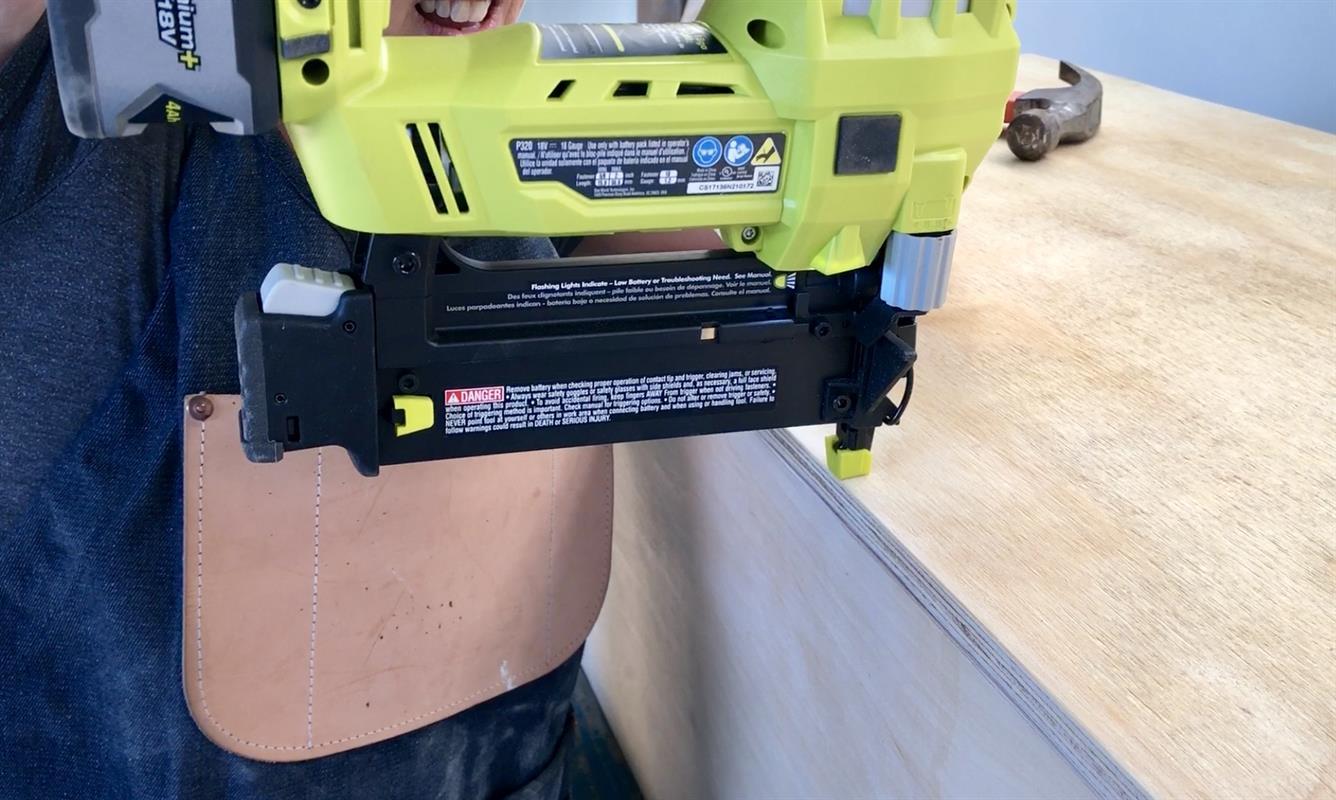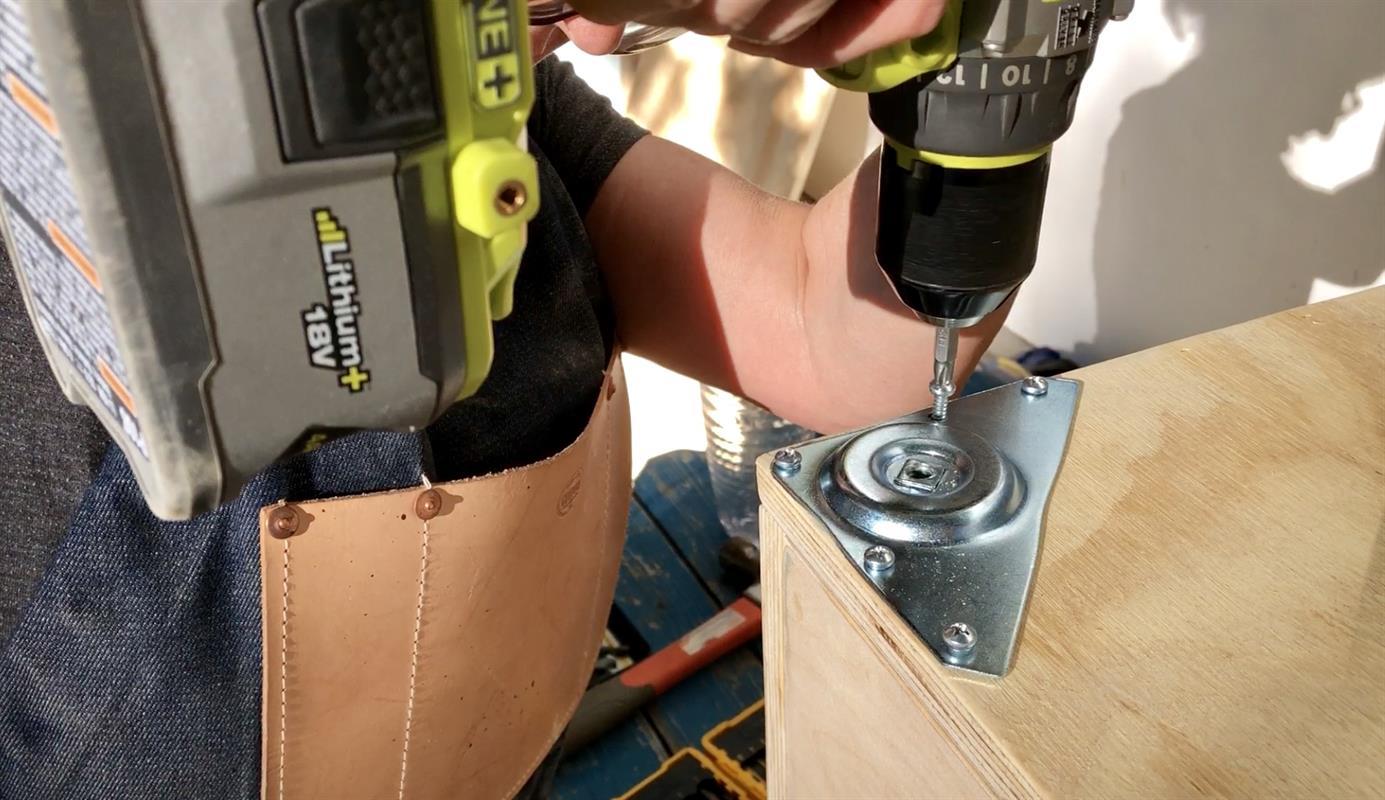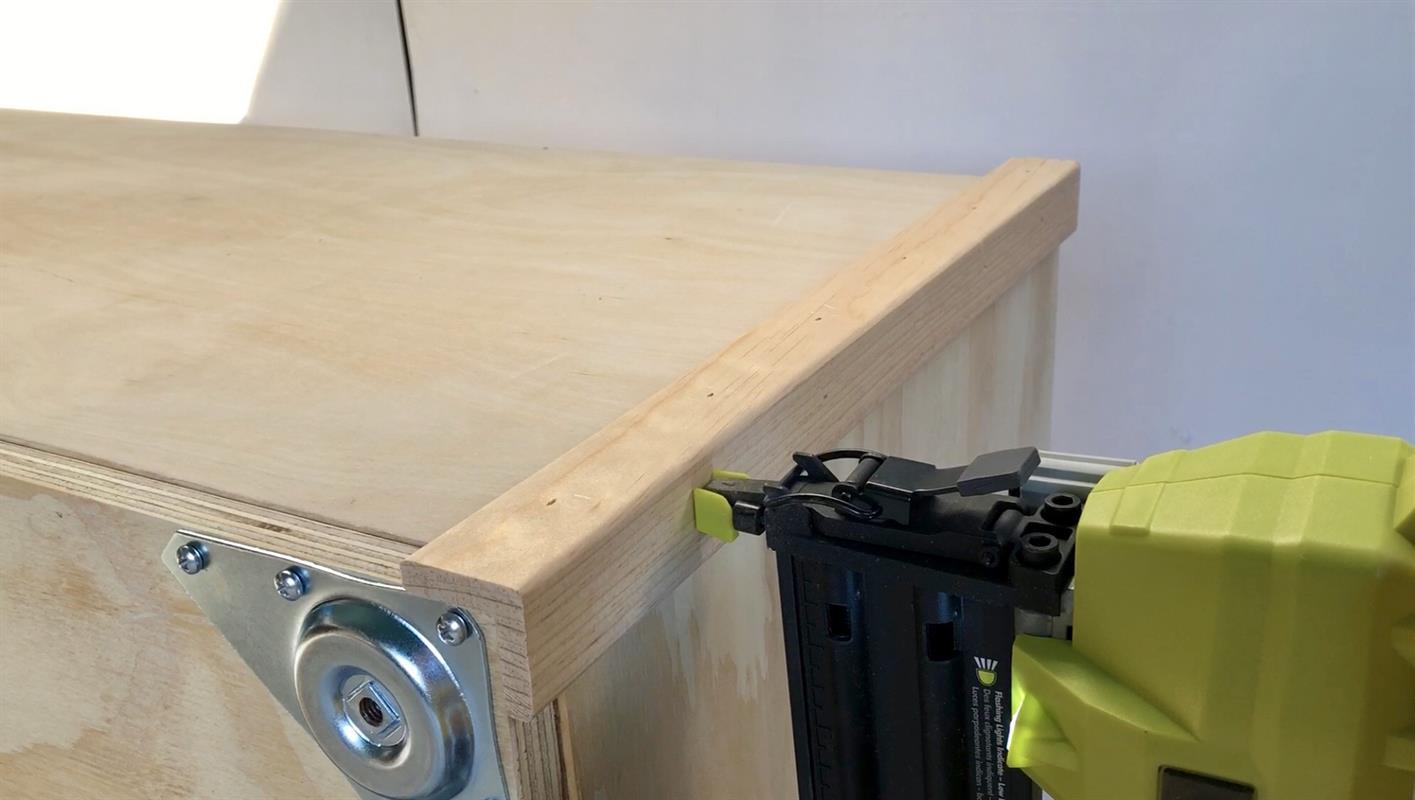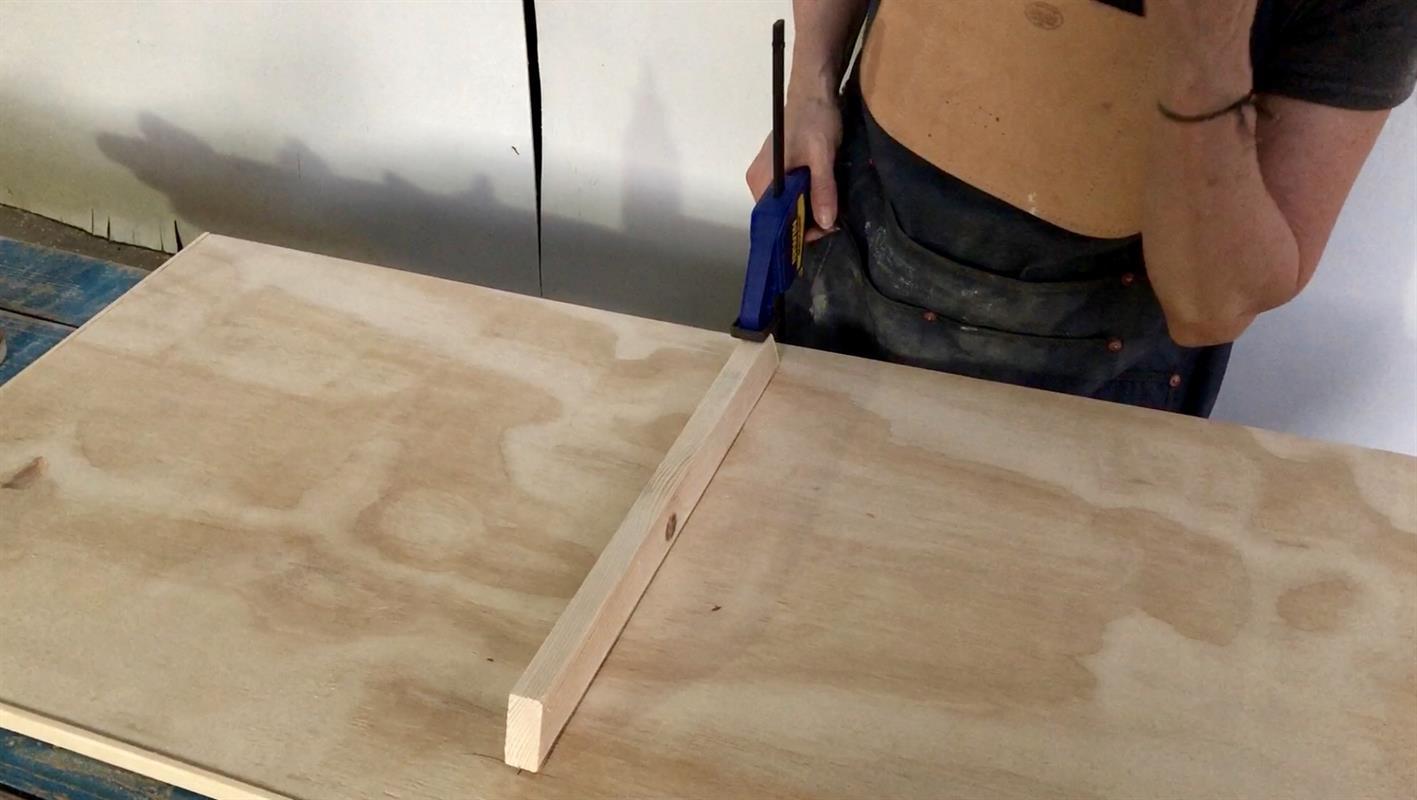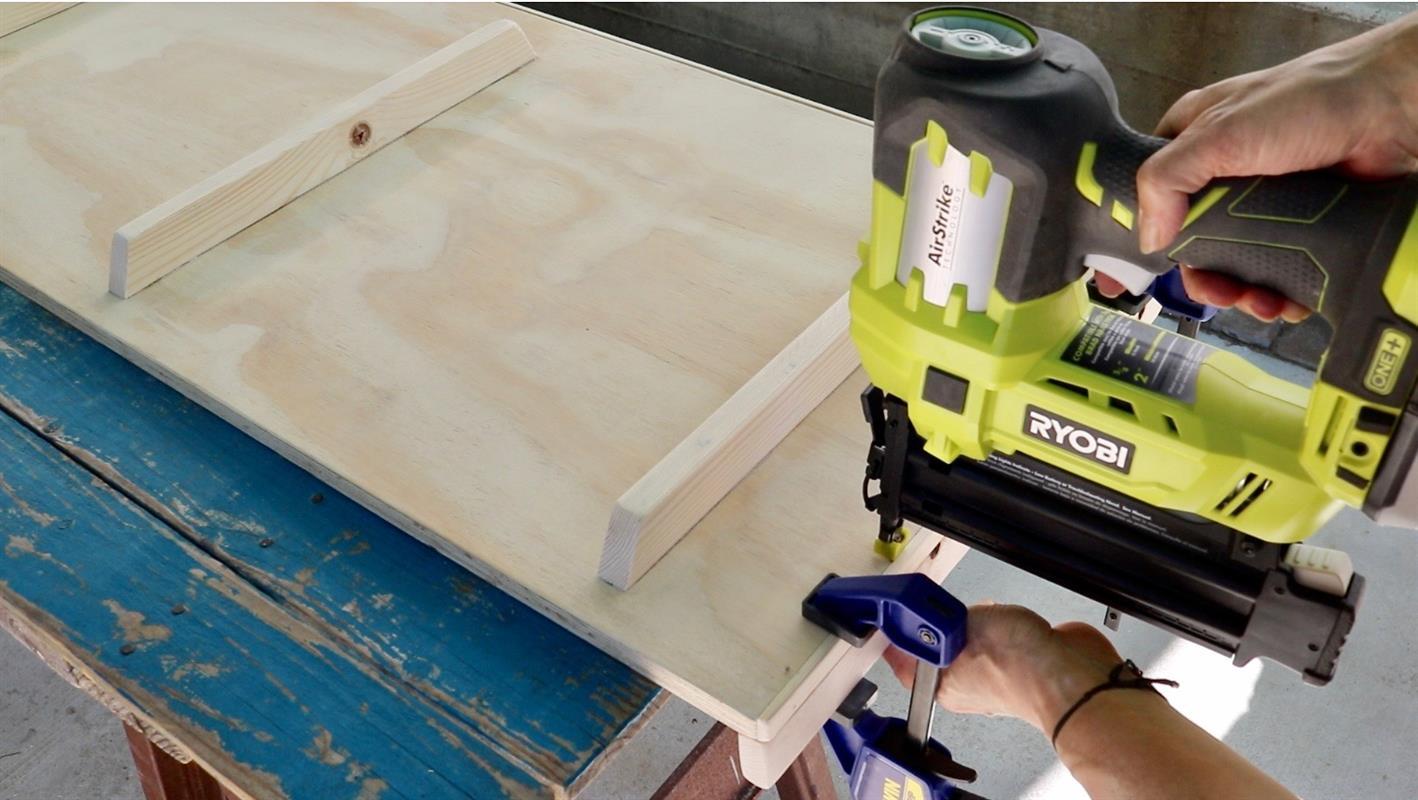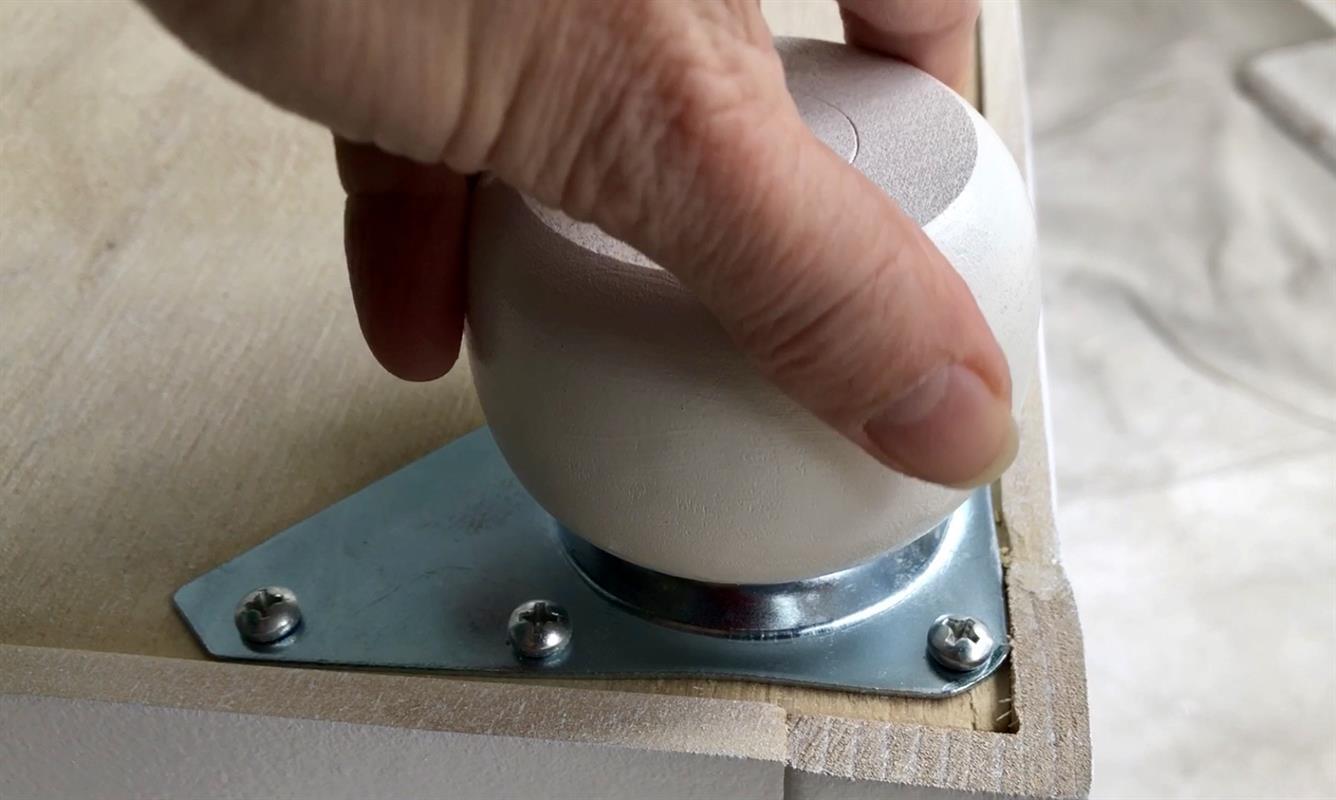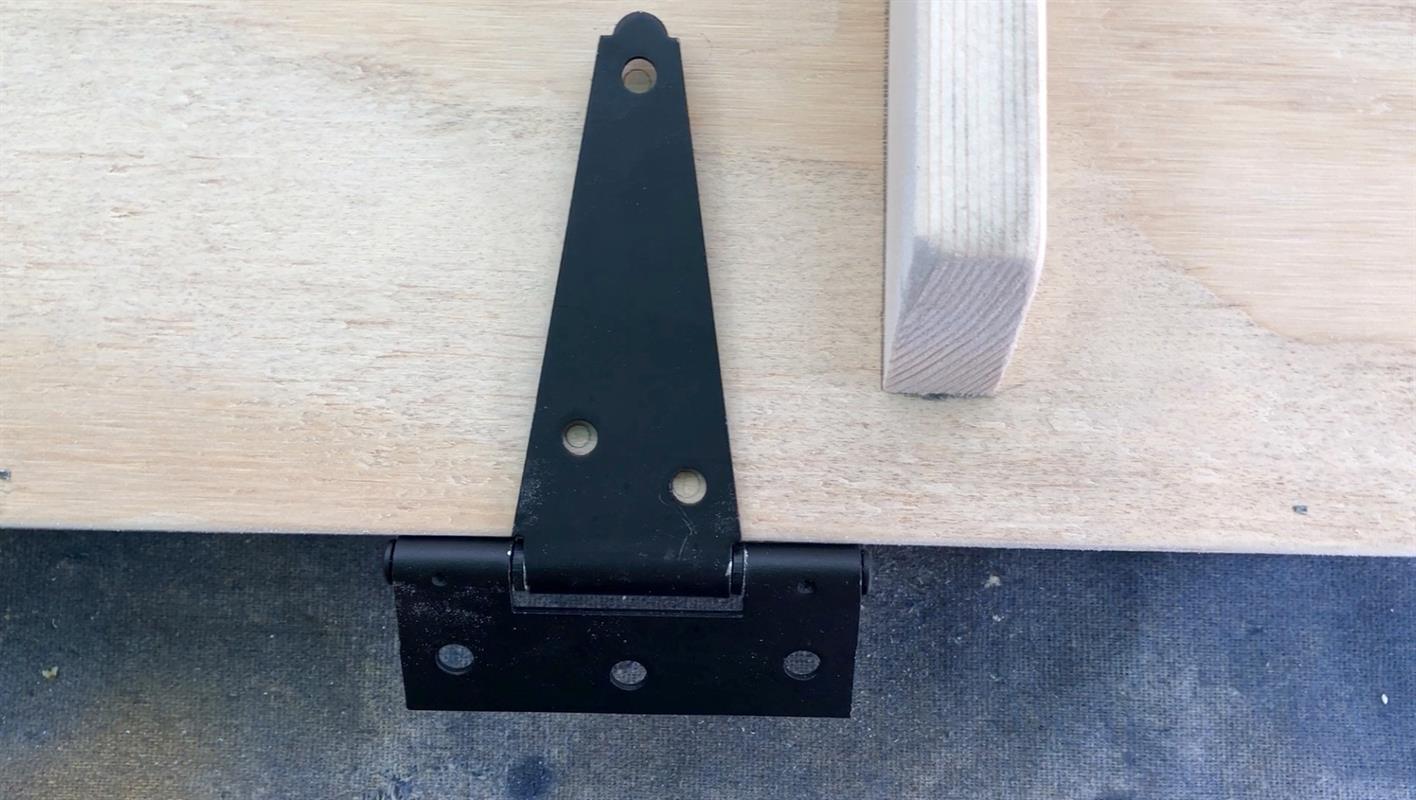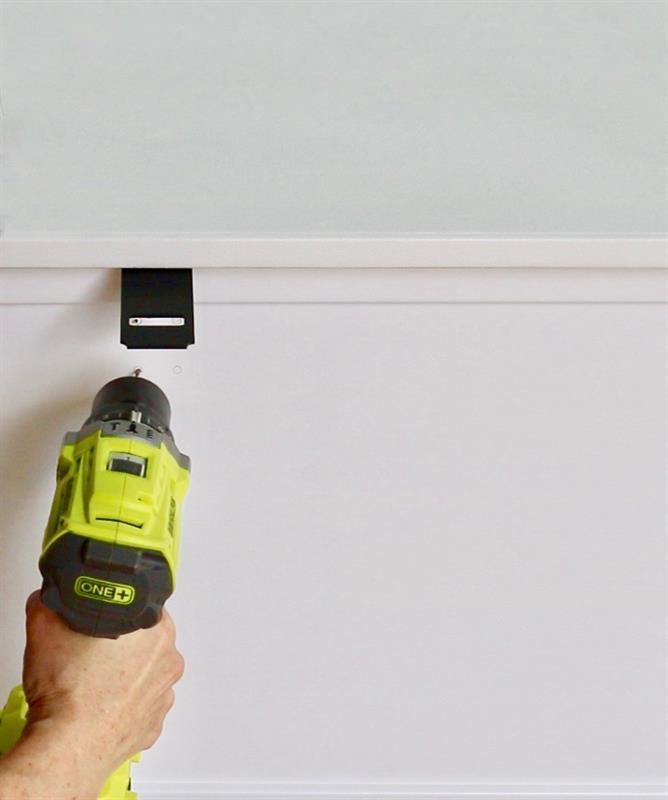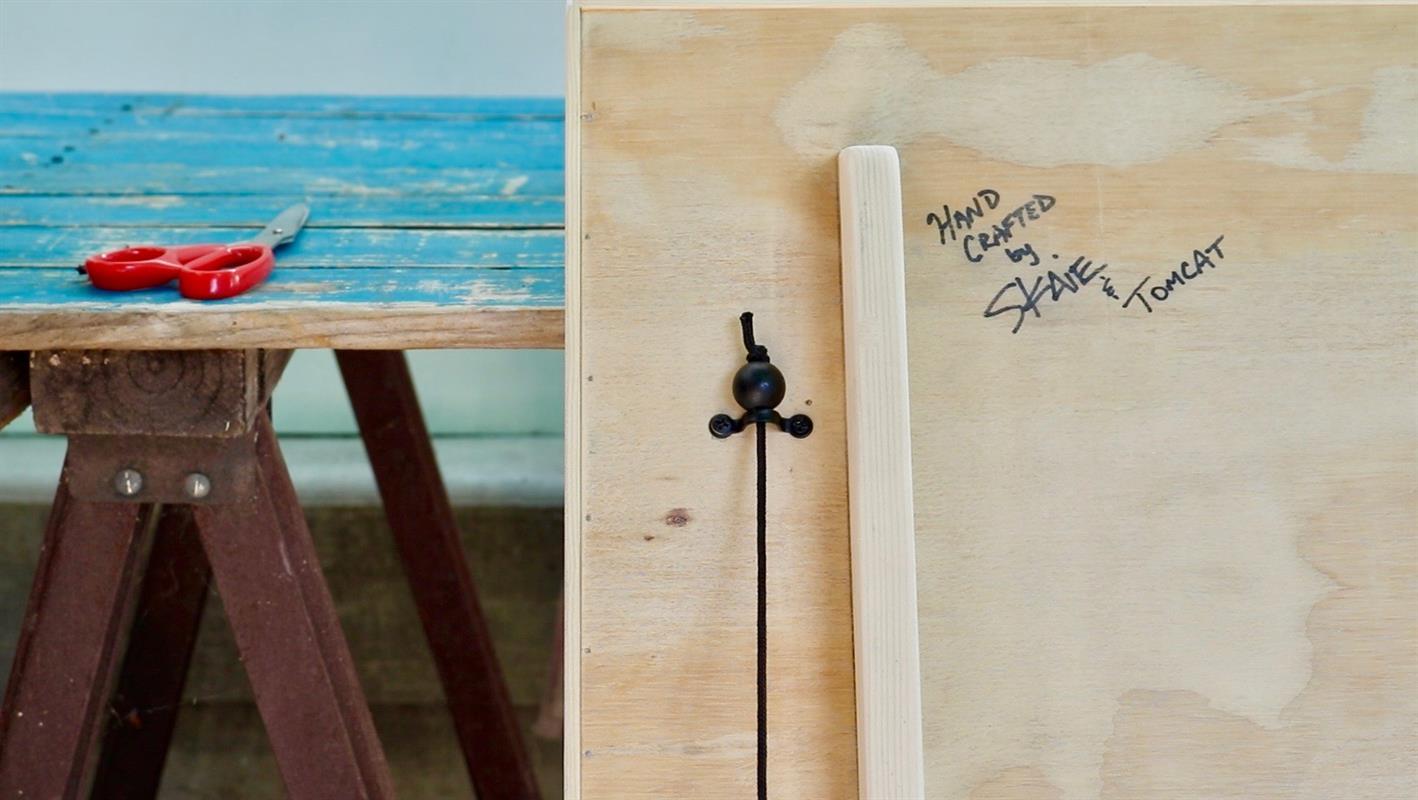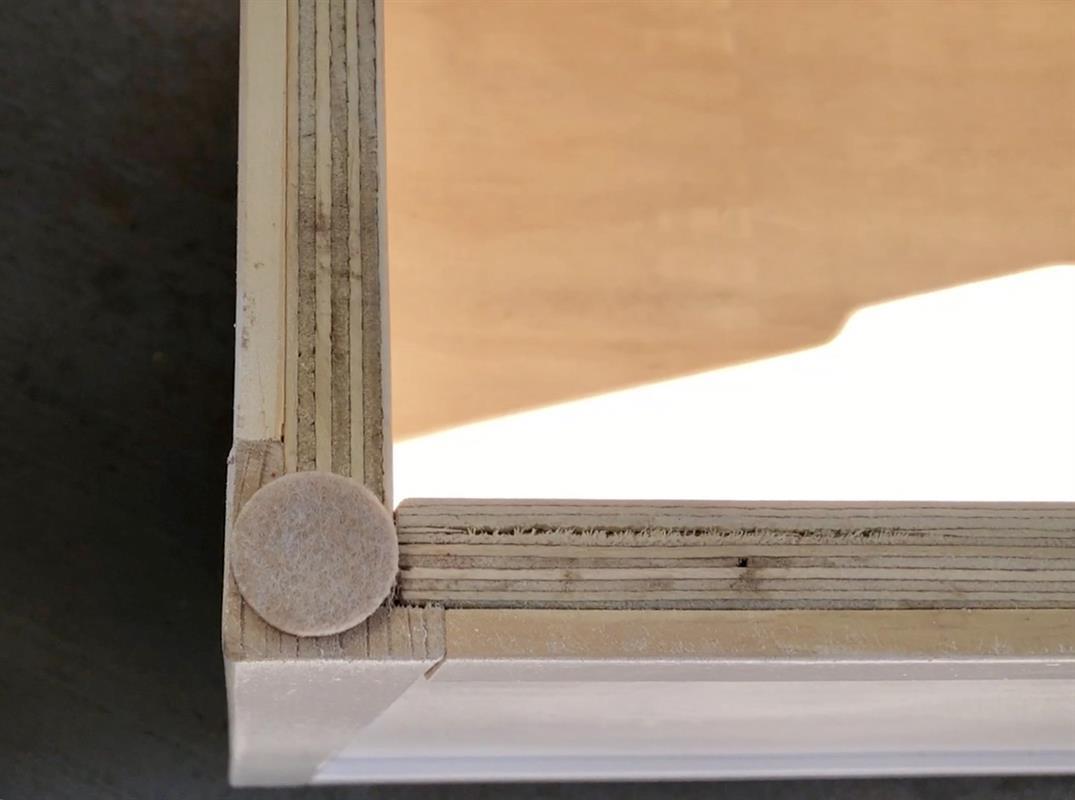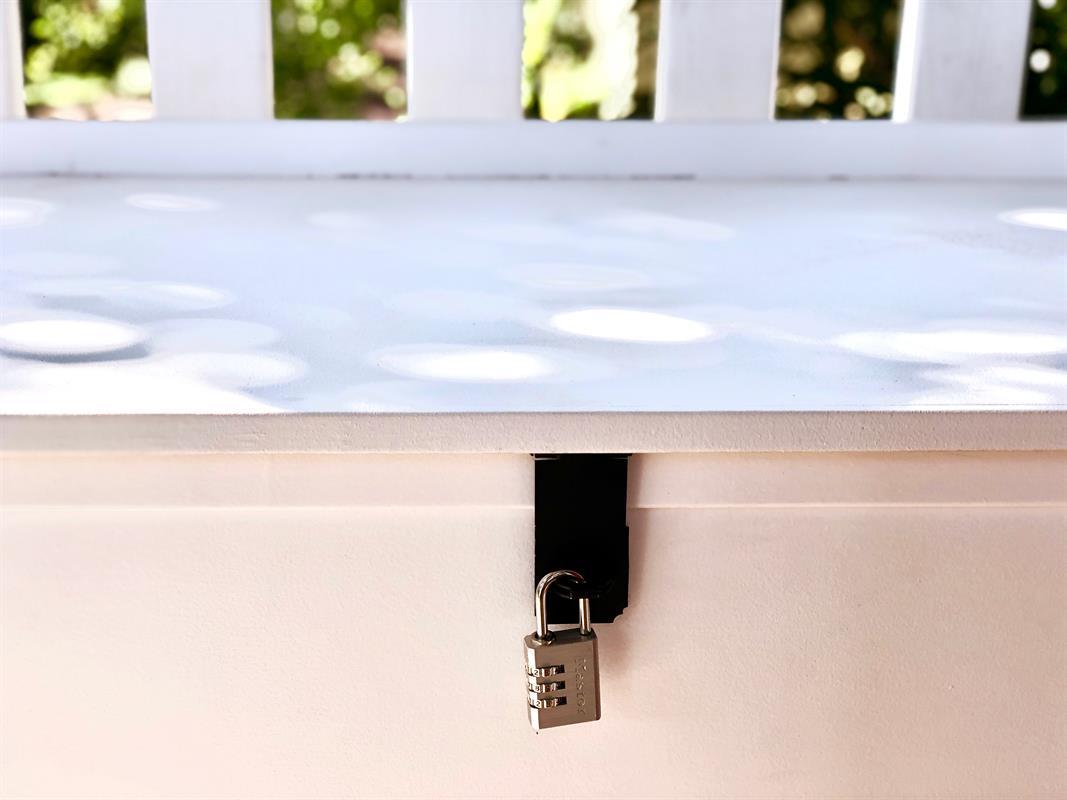DIY a Porch Packages Lock Box Bench
By HomeJellyFollow this doable plan to learn how to make your very own stylish & contemporary lock box bench! Place on your front porch or entryway to keep mailed packages locked away from porch pirates! You'll be taken step by step though this wood-working build, including a full video tutorial-link in extras.
Directions
-
Cut your box pieces then sand.
Use the diagram below to cut all boards out of a 4’x8’ piece of exterior sanded plywood. To save a ton of time, I had my Home Depot buddy, Barron cut all the pieces for me. Simple, and cost effective! Note: for DIY purists, use a table saw or skilsaw at home to get the job done.
-
Assemble your box pieces.
Create three pocket holes along each end of front and back pieces using the Kreg Jig R3. TIP! Place two fingers along outside edges of your wood piece to mark where to drill your outside pocket holes, then eye the center for the third hole.
-
Set jig slider & drill bit stop.
Set the jig slider according to the thickness of your wood. In this case, set it to ⅝” and adjust drill bit stop collar to ⅝”, clamp into place, then drill pocket hole. NOTE: if you’re a newbie to jigs like me, it’s a good super smart idea to practice on a scrap piece first.
-
Glue, Clamp & Screw
(A.) Apply wood glue to the edge of front piece (smooth with your finger so glue covers all the wood), clamp into place, then screw to first side piece.
(B.) Apply wood glue to the other edge of the front piece, clamp, then screw to second side piece.
Place back piece onto table, flip newly attached front and side pieces over, then attach back piece following the same steps you did in (A.) and (B.).
-
Attach bottom piece.
Place the newly assembled front, back and side pieces onto table. Apply glue along each side’s edge, then set the bottom piece on top. Using your brad nailer and 1 ¼” brad nails, nail into place, about 2 ½” - 3” apart.
-
Attach heavy duty top leg plates.
While you’re working on the bottom piece, why not check this task off the list? TIP! be sure to mark and make pilot holes to prevent wood from cracking. You may also want to create a ⅛” - ¼” deep hole for the foot screw in the middle to make sure it screws tightly into the plate.
-
Attach corner moulding.
Measure box height, then use a miter saw or miter box and hand saw to cut corner moulding. Ours was 16 ⅝”. Sand edges smooth, apply glue to moulding, then attach to each box corner using your brad nailer (using 1” brad nails). TIP! Make sure top is flush, if it’s longer on the bottom, that’s a-okay!
-
Attach flat moulding.
Measure length of box inside the corner mouldings, cut, apply glue, then attach flat moulding with 1” brad nails. Apply to top and bottom of front and side pieces.
-
Attach screen moulding to top lid.
(A.) Start with middle front piece, make one 45° bevel cut on one end, then hold it onto the front of the top lid piece, aligning it to the right end of the lid.
(B.) Place a mark onto the moulding at the edge of the left side of the lid - then make 45° bevel cut from the mark away. Glue, then brad nail in place using ¾” brad nails.
(C.) For side mouldings, place on one side of top lid to mark cut line - allow about ¾” - 1” extra length for miter cut. Do the same for the other side piece, then make a 45° bevel cut on both. Mark the moulding to meet the back of the lid (flush), then make a straight cut.
(D.) Align side moulding bevel cuts to front moulding bevel cuts, glue, then nail in place.
-
Attach underside lid braces.
This will help prevent your top lid from warping.
(A.) Cut three, 15 ½” length pieces of your ¾”x1 ¼” pine board.
(B.) Make a 30° miter cut on each end, then sand to smooth for a finished look. This will also prevent you from inadvertently cutting yourself (or others) later when placing things inside the box.
(C.) Measure and mark where you wish to place your braces. Flip over your top, then use the same measurements to find and mark the centerline of your brace placement.
(D.) Flip to underside, apply glue to brace piece edge, then clamp into place.
(E.) Carefully flip top lid over again (we’re back to the topside of your top), then brad nail into place using 1 ¼” nails.
(F. ) Do the same for the two other braces.
-
Attach top lid railings.
This finishing touch is optional, but, if you wish to add a cushion, it will help keep it in place. Come on! You’ve come this far! Let’s do it!
(A.) Measure and cut two side pieces and one back piece out of your ¾”x 1 ¼” pine board.
(B.) On each side piece, make a 30° miter cut at the front ends.
(C.) Sand to round them out, then apply glue, clamp into place.
(D.) Carefully flip to underside of lid, then brad nail into place using 1 ¼” nails.
Note: for a comfy finish, be sure, with all your wood pieces to sand surfaces and edges smooth and slightly rounded. Add wood filler to brad nail holes to really make your bench nifty.
-
Paint lid and box.
Use exterior semi-gloss, paint and primer and a paint sprayer or spray paint for a quick and smooth finish. Paint at least 2-3 coats.
(A.) Paint the topside of the top. I used a lazy Suzan to get to all sides without a finger-printy mess...so easy!
(B.) Flip over the box, tape off the leg plates, place onto bricks (or paint cans or whatever) then paint.
(C.) Paint feet.
(D.) Optional: spray paint all hardware (except underside leg plates) a desired color. We used flat black, as it coordinates with our home’s exterior trim.
-
Screw on feet.
Be sure feet are tightened and balanced.
-
Attach hinges to top lid, then box.
Place hinges evenly apart about 1’ from each end, then attach. Place top onto box making sure there is an even 1” overhang on both outer edges. The back edge should be flush. Attach hinges to box.
-
Attach safety hasp.
We attached ours to the middle front of our box.
-
Spray on outdoor polyurethane.
Spray a couple coats of outdoor polyurethane to inside of box to help keep wood protected from the elements.
-
Attach nylon cording lid support.
(A.) Attach eye straps to both sides of box and lid.
(B.) Thread nylon cording through straps, then wooden bead, then tie off.
Note: use a lighter to burn off end of nylon cording to prevent fraying.
-
Adhere box bumpers.
This will make closing the lid much quieter and less clunky.
-
Add lock! You did it!
Use an exterior lock to resist rusting from the weather.
Note: this box was designed to help keep amateur porch pirates from stealing your stuff. Nevertheless, this smart and somewhat lofty effort is no guarantee. Still, it's better than nothing at all.
BE SURE to SECURE your box bench via wire cable or screw into the side of a railing.



